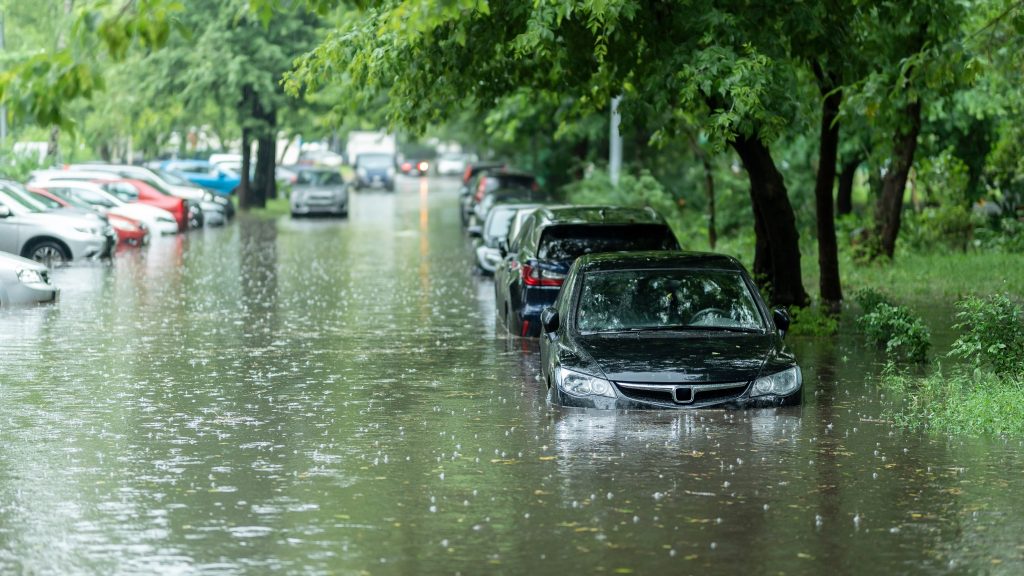Climate Change and Water
Climate Change 101

Before digging into the connection between climate change and water, it’s important to understand the difference between weather, climate, and climate change
Climate change is not the same thing as weather. Weather is what happens from one day to the next, or even within the same day. Weather conditions averaged over a period of years for a given region is what is known as a region’s typical climate, and it usually differs to some degree from season to season. Climate change, on the other hand, is a change in a region’s typical climate, whether it be temperature or precipitation related. The Earth’s climate is an average of all the regions combined.
Climate change is also not global warming. Global warming is a long-term increase in the Earth’s average temperature.
Climate change processes occur naturally, and studies now show that human activity is rapidly accelerating those changes. Natural climate change has occurred since the beginning of Earth’s time, about 4.5 billion years ago, as the Earth’s distance from the sun changed, continents repositioned, and amounts of gases in the atmosphere fluctuated. A record of temperatures from more modern, thermometer-based information shows that the Earth’s surface temperature is rapidly increasing. This increase corresponds with humanity’s surging fossil fuel consumption since the industrial revolution.
Climate change can cause the temperature of the Earth’s atmosphere to increase or decrease through a variety of mechanisms. Most recently, climate change is causing the temperature of the Earth’s atmosphere to increase. The warmer air of the atmosphere can hold more moisture than cooler air which causes the air to absorb more water than usual from bodies of water and plants. When more moisture and heat are present in the air the strength and frequency of rain or snowstorms increase.
The Connection to Water

The impact climate change is having on the Earth’s water cycle is significant and is already negatively affecting Indiana’s local water systems, as well as our overall health and economy. Increases in droughts and precipitation are just a few of the impacts being noticed as a result of climate change, not only in Indiana, but across the United States and the world.
The Climate Change Research Center at Purdue University in West Lafayette, Indiana recently released a publication about Indiana’s water future. The report, The Future of Indiana’s Water Resources: A Report from the Indiana Climate Change Impacts Assessment, presents several key messages about precipitation – including snowfall, temperature, water storage, and potential flooding events that Indiana can expect to see in the future. In addition, the article briefly touches on Indiana’s water history and its use and management.
The impacts don’t stop there. Climate change also affects circulation patterns which alter where precipitation falls. It is predicted that the American Midwest and parts of the North will get wetter, while the West, Southwest, and Southeast will get drier. According to Upmanu Lall, director of the Columbia Water Center, “Most of the climate change impacts come down to water. When people talk about climate change affecting agricultural output, sea-level rise, wildfires, and extreme weather —they’re all essentially a water story.”
More frequent and heavier precipitation events have far-reaching effects, including increases in the amount of surface water runoff, or stormwater. Stormwater is full of pollutants, carrying sediment, excess nutrients, viruses, bacteria, and more to our lakes, reservoirs, streams, rivers, and oceans. It costs water utilities more to treat heavily polluted water in order to meet drinking water standards. Polluted water also threatens the health and well-being of fish and wildlife, especially when compounded with the warmer water temperatures for which climate change is also responsible. For example, excess nutrients (from fertilizers and untreated sewage) brought into waterways by runoff can lead to algal blooms that cause taste and odor issues in our drinking water and suffocate fish and other aquatic life. And warmer waters negatively decrease the amount of oxygen in the water (dissolved oxygen) that fish need for their survival.
Oceans are experiencing impacts from climate change as well. One of the most discussed issues is the melting of glaciers and icebergs causing sea levels to rise, potentially putting properties along coastlines at risk of repeated or permanent flooding. Fish and other wildlife are seeking cooler water and are moving toward the poles to find it. Cooler waters, in addition to increased levels of acidity, pose challenges to the fishing industry. Ocean currents are also being modified because of temperature changes, and the temperature of the ocean is the driving force behind circulation patterns in the atmosphere. With these differing circulation patterns, weather changes will likely be seen all over the world.